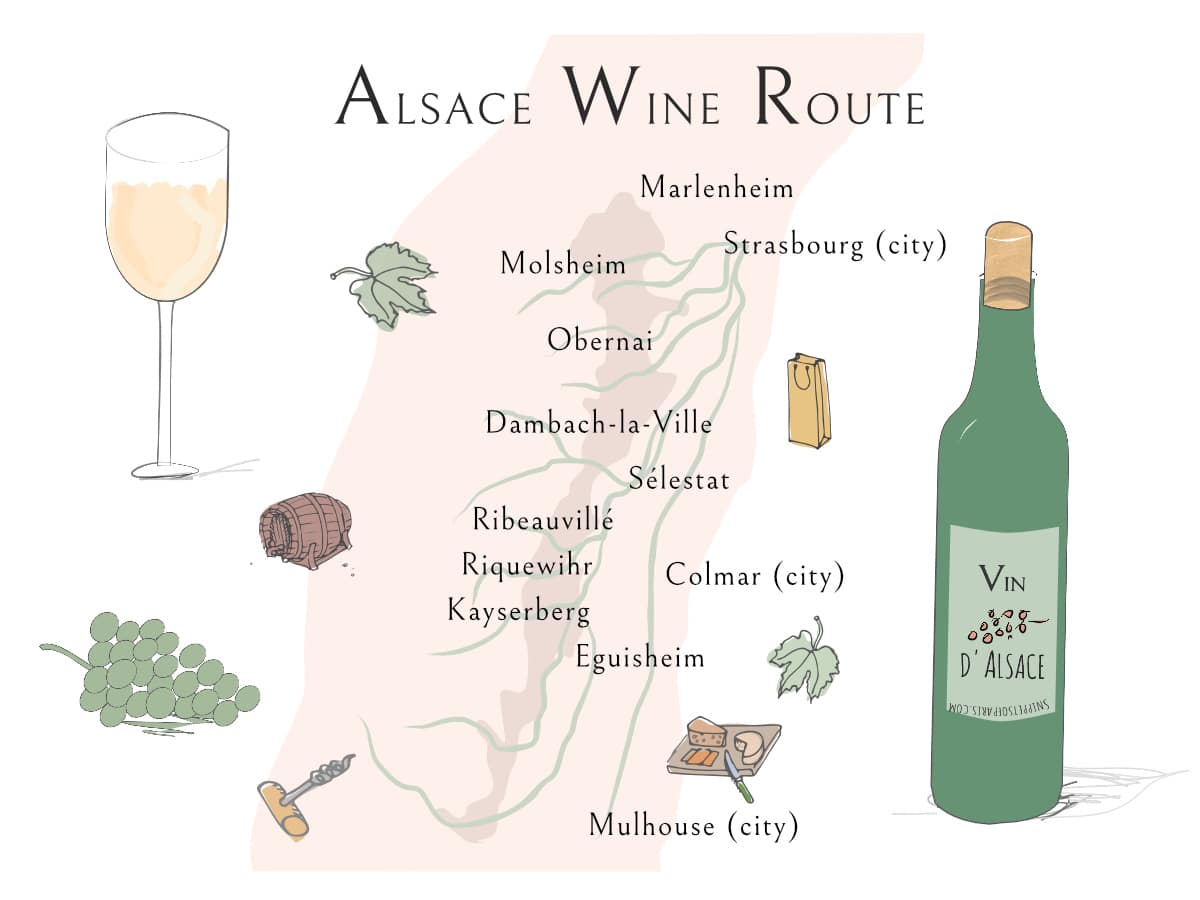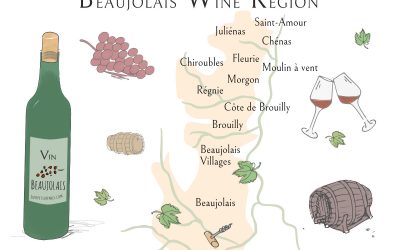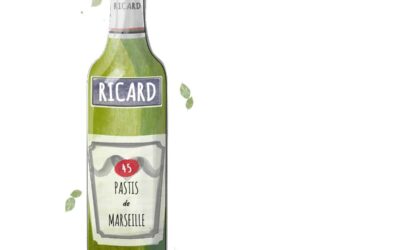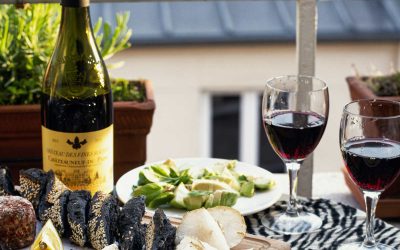Over the centuries, it has been it has not been easy to be a winegrower in the Alsace region. Amongst the famous and most prestigious wines of France, there are not many that are from Alsace.
This is not to say that wines from Alsace are not popular. With some excellent white wines like Reisling and Gewurztraminer, Alsace is slowly building a name and a reputation.
With continual wars between France and Germany since the era of Charlemagne, the region had the distinction of being a battleground, rather than as a famous wine route.
With the region ping-ponging back and forth between Germany and France, wines from Alsace were originally heavily influenced by German wines. (Germany may not be well-known for its wine but there are vineyards along the Rhine river in the Western part of Germany that date back to Roman times.)
These days Alsatian wines benefit from their status as being in France, not Germany. Since the 1950s, with French “savoir-faire”, wines from Alsace have diverged in taste from German wines, becoming sweeter and drier, and at the same time gaining wide-spread recognition.
Most of the wines produced in this area are white wines, but there is the odd red wine and crémant (sparkling wine) as well. Wine tasting in Alsace has bloomed as an industry and appellations like Reisling have become renowned the world over.
With high-speed train access from Paris, London, and other large European cities, the cities of Strasbourg and Colmar have become tourist hubs as visitors flock to the region to indulge in a bit of sauerkraut, flammkuchen, and wine.
Classifications: How to pick a bottle
As with other wines a good bottle of Alsatian wine has the following noted:
- AOC – Appellation d’Origine Contrôlée
- AOP – Appellation d’Origine Protégée
- Vin de Table – Table wine
Note, there is no “Vin de France” category for Alsatian wines. The AOC/AOP wines are further classed based on prestige such as Grand cru, Premier Cru to Cinquième Cru (1st to 5th Cru), and Village.
Alsace names its bottles based on the grape variety, compared to Bordeaux wines are usually labeled based on the estate/château, and Burgundy wines which are named based on “terroir” (land). You can find out more about French wine labels here.
☞ READ MORE: 17 French Social etiquette tips: Who pours the wine?
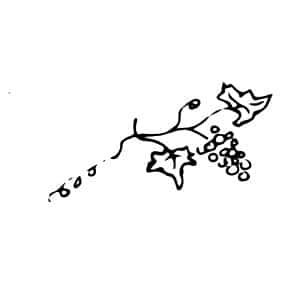
What grapes are used?
In Alsace, wines are named after the chief grape that is in the wine.
For white wines, the 4 main noble grapes in Alsace are Riesling, Pinot Gris, Muscat, and Gewurztraminer. The Auxerrois blanc and Sylvanner grapes are also used in Alsacian white wine blends.
The region is well-known for its white wines, with almost all the wines in the area being white.
The most popular white wine from Alsace is by far the Reisling, followed by the Gewürztraminer wines. Red wines and rosés from Alsace use Pinot noir as their main grape.
☞ READ MORE: 14 Amusing French Wine Quotes for a little tipple

Taste: Are Alsace wines high in tannins?
The Alsacian red wines are pinot noirs which are thin-skinned grapes, and thus have a soft and silky taste, with the tannins providing structure and harmony.
The most popular Reisling is rather dry (meaning not sweet) with a refreshing acidity. The other white wines are aromatic with light floral and fruit tones. You can read more about each wine below.
What dishes pair well with wines from Alsace?
The reisling and other wines from the area are usually paired with cheesy and creamy dishes like au gratin potatoes, creamy coquilles St. Jacques, chicken blanquette, and more. You can read more about pairing ideas with individual appellations below.
Appellations: Famous Alsace wines
1. Reisling
Type: White
The most famous of the Alsatian white wines, Reisling dates back to the 15-century. From the Reisling grape, it has a fruity aroma and high acidity and has quite a cleansing aftertaste.
With the region being near the French Alps, there are a lot of winter dishes this wine accompanies, although a chilled Reisling is also quite welcome in summer.
But if you are in France in the winter, you will usually see it served with hearty winter meals, such as a cheese fondue or a raclette.
Buy a bottle of Reisling here.

2. Pinot Blanc
Type: White
The Alsace Pinot Blanc, named after the pinot blanc grape, is a light floral white wine with peach and citrus tones. It is a wine that opens up quickly and so tends to be quite light and discreet in a pale yellow.
It is said to go well with dishes with egg in them like the quiche lorraine (or a spinach quiche if you prefer vegetarian).
Buy a bottle of Alsace White here.

3. Pinot Gris
Type: White
A more complex white wine, the Pinot Gris is usually has a more yellow golden color than the pinot blanc. With notes of dried fruit and apricot in it, it should be aired in the glass in order to fully let it breathe.
The Pinot Gris has a finish that is long and well-balanced. It goes well with heavier dishes like gratin dauphinoise or blanquette de veau.
Buy a bottle of Alsace Pinot Gris here.
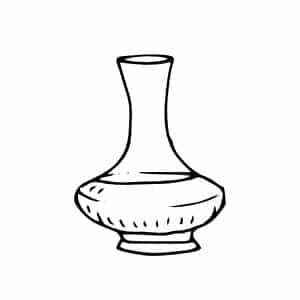
4. Muscat
Type: White
Muscat d’Alsace has a stronger taste of raisin than some of the other white wines and can be rather dry. A muscat from Alsace is different from other muscat, like the Muscat de Midi which is sweeter.
The wine has an intense aroma of fruit complemented by floral tones. It is often paired with fish or vegetables.
Buy a bottle of Muscat here.

5. Gewurztraminer
Type: White
Gewurztraminer wine, as you can tell from its name, is a German-influenced white wine. It has quite an exuberant taste (as well as a rather exuberant name). “Gewürz” means spices in German. The grapes tend to have a pinkish color and this wine is has a rich aromatic palette and complex character.
The taste includes light notes of everything from exotic fruits like lychees, passion fruits, pineapple, etc.) to flowers like roses, citrus fruits, and spices. Despite its complexity, it does still keep a freshness that is a delight to indulge in.
The Gewurztraminer goes rather well with local dishes like choucroute (sauerkraut) and sausages.
Buy a bottle of Gewurztraminer here.
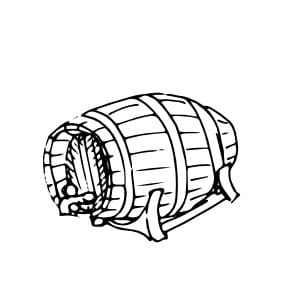
6. Pinot Noir
Type: Red
As mentioned above, Pinot Noir is the name of the grape and the wine. One of the rare red wines produced in Alsace, this Pinot Noir has the distinction of allowing itself to be served chilled at 15C° (or 60F°).
The Alsatian Pinot Noir is not as famous as the Pinot Noir from Burgundy, but it is growing in popularity. The wine has delicious aromas of blackberry, blackcurrent, cherry, with sometimes notes of leather or vanilla.
The Alsatian Pinot Noir is great for an apéro, paired with appetizers. It can also go well when used as a base for a vin chaud (hot spiced wine).
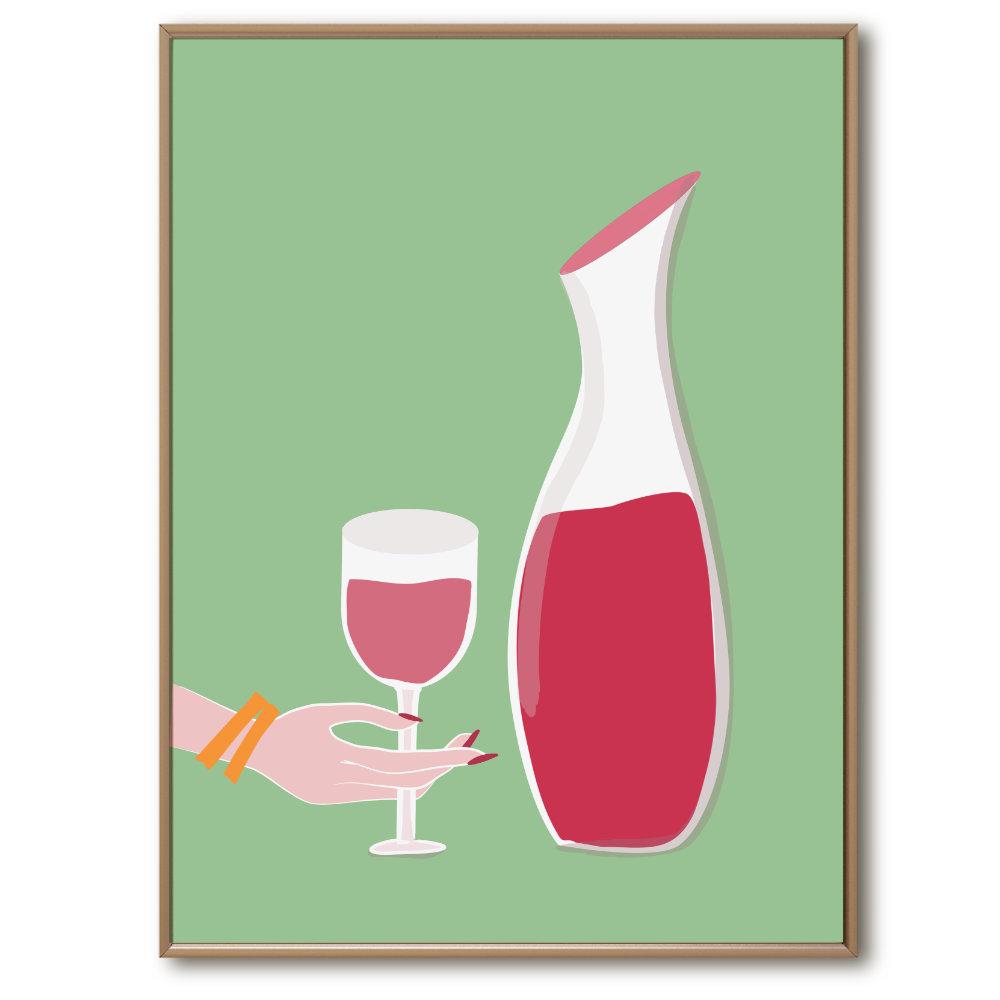
7. Crémant d’Alsace
Type: Sparkling White or Sparkling Rosé
A classic sparkling wine from Alsace, you can find Crémant d’Alsace in white or rosé. Crémant is made using the same traditional process as champagne, except it is not allowed to be called champagne since it is not from the Champagne region of France.
Crémant d’Alsace is lovely as an apéritif along with oysters or other seafood starters.
Buy a bottle of Alsace White wine here.
Should you chill your bottle?

Yes, the white and rosé wines from the Alsace region are usually served chilled. Even the red pinot noir should be served chilled at 15C° (or 60F°).
What cheeses pair well with these wines?
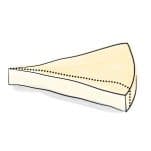
Alsace wines easily go with many cheeses, but a particular favorite is goat cheeses like bûche de chèvre and saint maure. You can read more about French cheese and wine pairings here.
Prices: Are Alsace wines expensive?
Alsace wines are very reasonably priced, as they are usually imbibed immediately, rather than held onto for several years.
Unlike Bordeaux and Burgundy wines which reach stratospheric prices due to vintages being kept for years, if not decades, even Alsace wines grand crus do not usually exceed 3-4 €figures.

Alsace wine route
As a way to boost tourism, local officials have put together a thematic route, that is the oldest wine route in France.
Located along the eastern border of France and Germany, the Alsace Wine Route spans 105 miles (170 km), starting near Strasbourg in the north, past Colmar and ending west of Mulhouse. Along the way are dotted several vineyards, and charming little villages like Ribeauvillé, Eguishem, and Riquewihr.
Known as the Route des Vins d’Alsace, roadtrippers can drive through the region, stopping at vineyards offering tastings, and take home a few souvenirs. You can find out more information about tours and tour companies here.

So are you ready to try an a chilled Alsatian Pinot Gris on a hot summer’s day? If you enjoyed that article, you may want to read more about wine and cheese pairings here.
As always, as the French Government advises, “the abuse of alcohol is dangerous for your health. Consume with moderation.” A bientôt!
